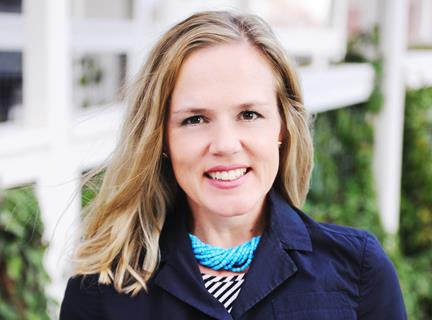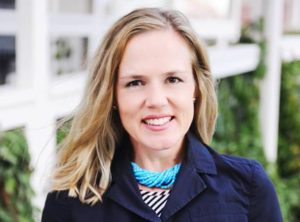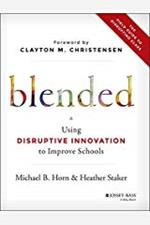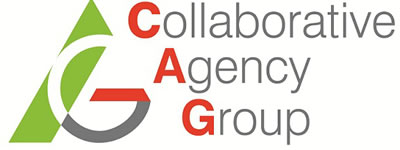
06 Nov Heather Staker

Speaker: HEATHER STAKER
Thought Leader on Blended Learning and Author of “Blended: Using Disruptive Innovation to Improve Schools”; Founder of Ready to Blend; Adjunct Researcher, Clayton Christensen Institute
Speech Topics Include:
- How Disruptive Innovation is Changing the Way the World Learns
- Ready to Blend: Training School Leaders to Make the Most of Technology Investments
- The Rise of K-12 Blended Learning: Why It’s Hot and When It’s Not
- Is K-12 Blended Learning Disruptive? An Introduction to the Theory of Hybrids
Heather Staker, one of the world’s foremost experts on K-12 blended learning, is the founder and president of Ready to Blend, a research initiative focused on helping educators and families use blended learning to improve the achievement and well-being of K-12 children. Staker is an adjunct fellow for the Clayton Christensen Institute for Disruptive Innovation, a nonprofit think tank that promotes disruptive innovation in education and health care. In the fall of 2014, Heather published “Blended: Using Disruptive Innovation to Improve Schools” (John Wiley & Sons) with co-author Michael B. Horn, a groundbreaking book that will serve as a field guide and eye-opener for the builders and influencers of the next generation of K-12 learning environments.
Named by Scholastic as one of the Five People to Watch in Education in 2012, Staker is well known for her work defining blended learning and naming the four most common models of blended learning in practice across America. In 2012, she co-authored “Classifying K-12 blended learning,” which identifies the main models of blended learning and explains how they differ. Her 2013 paper, “Is K-12 blended learning disruptive?” which she co-authored with Clayton Christensen and Michael B. Horn, makes provocative predictions about the future of America’s classrooms. Staker is also the co-founder of Brain Chase, a 5-week online-learning adventure disguised as a worldwide treasure hunt for students in grades 2-8 during summer break.
Staker appears regularly throughout the country on radio and television as a keynote speaker, legislative expert, and conference panelist who educates the masses on blended learning, competency-based learning, and student-centered design. Her favorite assignment is training education leaders on how to develop high-impact technology investments centered on high-quality blended learning.
Prior to the Christensen Institute, Staker worked as a strategy consultant for McKinsey & Company, served as a member of the California State Board of Education during Governor Pete Wilson’s administration, taught U.S. history as a teaching fellow at Harvard University, started a co-op preschool, and marketed Oil of Olay for Proctor & Gamble. She holds a BA in government from Harvard University and an MBA from the Harvard Business School. She is happily married to Allan Staker, and together they are raising five spirited children in Salt Lake City, Utah.
How Disruptive Innovation is Changing the Way the World Learns
Computers have been in classrooms for decades, but they have scarcely made a difference in improving education. Classrooms look basically the same as before, but with a layer of technology and complexity crammed on top, and their results are roughly unchanged. Online learning, however, is breaking that pattern. It has the classic features of a disruptive innovation—the same type of innovation that killed mainframe computers, film-based photography, telegraph machines, and countless other popular technologies of the past. Disruptive innovation follows a telltale pattern that shines a light on the startling growth of online learning and what it means for the world. This session looks at online learning in general, as well as examines how it is being used in specific states and regions of interest to the audience. It concludes with steps that educators can take to channel disruptive innovation to its highest potential.
Ready to Blend: Training School Leaders to Make the Most of Technology Investments
Through half-day and full-day training sessions, Staker prepares school leaders to develop high-quality blended-learning plans that maximize the impact of technology in classrooms. The core objectives of these sessions are to:
- Introduce the theories of disruptive and sustaining innovation as a framework for helping to understand the rise of K-12 blended learning.
- Increase awareness of the difference between high-quality blended learning and “cramming,” which means using technology for technology’s sake. Help participants identify worthwhile uses of technology and design an emergent strategy to capture the opportunity.
- Introduce a multi-step process for designing and implementing a blended-learning program. The steps include defining the “rally cry,” organizing to innovate, designing the model from a jobs-to-be-done perspective, implementing, and iterating through a discovery-driven planning process. Through concepts, tools and technology, Staker helps participants break down the planning process into a series of steps. These steps can then be used to help school leaders systematically prepare for, design, and implement their own customized blended-learning plans.
- Give participants opportunities to practice the skills that lead to success. Increased awareness and a systematic framework are most valuable when tied directly to practical skill building. Using case studies and group exercises, Staker challenges participants to engage in the blended-learning planning process using a hands on approach so that by the end, they are ready to apply those techniques on their own when they complete their plans as school teams.
The Rise of K-12 Blended Learning: Why It’s Hot and When It’s Not
Online learning used to be a last resort for students who wanted a distance education. Not anymore. More schools in America are blending online learning into their mainstream, brick-and-mortar classrooms to solve problems that have troubled the system for decades but lacked a viable solution. These include filling gaps in a course catalog, helping teachers personalize learning, teaching English language learners, and freeing up resources for one-on-one tutoring. The common intent behind the growing variety of programs is to leverage online resources to create individualized learning experiences for each student without draining the budget. Several models of blended learning are taking shape across the country, including the Flipped Classroom, Flex, and Station Rotation. School leaders must take a few critical, sometimes counterintuitive steps to design a bulletproof blended-learning strategy that inspires and lifts students to their highest potential.
Is K-12 Blended Learning Disruptive? An Introduction to the Theory of Hybrids
Steam-powered sailing ships, Kodak photo kiosks, and the Toyota Prius all share one thing in common: they are hybrids—which means they combine an old and new technology to offer “the best of both worlds.” In many ways, thousands of classrooms across America are doing the same thing. They are trying to offer the advantages of online learning along with the benefits of the traditional system by implementing hybrid blended-learning models. The Flipped Classroom, Station Rotation, and Lab Rotation are classic examples. But other blended models are following an entirely different path. They are literally tearing down classroom walls and offering a disruptive alternative to traditional education. The theory of hybrids helps education leaders and contributors shine a light on the future and anticipate what direction the school system is heading. In this provocative conversation, Staker predicts that over the long term, disruptive models will replace traditional schooling altogether and become the primary way middle and high school students experience learning.
Ready to Blend: Training School Leaders to Make the Most of Technology Investments
Through half-day and full-day training sessions, Staker prepares school leaders to develop high-quality blended-learning plans that maximize the impact of technology in classrooms. The core objectives of these sessions are to:
- Introduce the theories of disruptive and sustaining innovation as a framework for helping to understand the rise of K-12 blended learning.
- Increase awareness of the difference between high-quality blended learning and “cramming,” which means using technology for technology’s sake. Help participants identify worthwhile uses of technology and design an emergent strategy to capture the opportunity.
- Introduce a multi-step process for designing and implementing a blended-learning program. The steps include defining the “rally cry,” organizing to innovate, designing the model from a jobs-to-be-done perspective, implementing, and iterating through a discovery-driven planning process. Through concepts, tools and technology, Staker helps participants break down the planning process into a series of steps. These steps can then be used to help school leaders systematically prepare for, design, and implement their own customized blended-learning plans.
- Give participants opportunities to practice the skills that lead to success. Increased awareness and a systematic framework are most valuable when tied directly to practical skill building. Using case studies and group exercises, Staker challenges participants to engage in the blended-learning planning process using a hands on approach so that by the end, they are ready to apply those techniques on their own when they complete their plans as school teams.
- Help participants connect their learning to their next steps. Participants will leave with insights on how to get started with blended learning, as well as a sense of expertise about the step-by-step framework so that they have a complete roadmap to follow as they develop their school-based plans.




